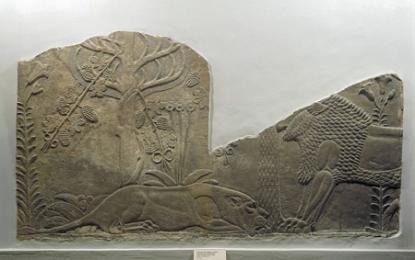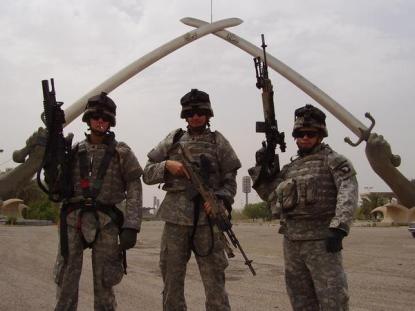 My previous post for the Public Humanist was a review of an exhibition of Assyrian art at the Museum of Fine Arts through January 2009.
My previous post for the Public Humanist was a review of an exhibition of Assyrian art at the Museum of Fine Arts through January 2009.
Today, there's another story to be told about Mesopotamian art. The First Lady of the United States, Laura Bush, announced the launch of an Iraq Cultural Heritage Project last week.
The project, funded with nearly $13 million from the US Embassy in Baghdad, will focus on three goals:
1. the conservation and preservation of historic material,
2. training Iraqi professionals in the United States (through partnerships with Chicago's Field Museum and the University of Chicago's Oriental Institute), and
3. improvements to Baghdads Iraq National Museum.
From almost any point of view this is a vitally important and long overdue initiative. The benefits are legion: showing Iraqis that Americans support their culture, collaborating with Iraqis on national projects that are as far from militaristic as one could imagine, and reinforcing an Iraqi national identity based on millennia of accomplishments. This could also be considered a mea culpa for the trashing of the museum at the start of the war and Donald Rumsfeld's insensitive remarks ("Stuff happens,") in regard to that destruction.
Many observers were outraged when the museum was looted in 2003. We do not excuse the Iraqis who went on such a senseless rampage (although many of them claim to have taken the objects for safekeeping and have since returned museum artifacts). However, the Coalition Forces led by the United States showed an appalling lack of foresight to allow the looting to happen.
When we consider how much tension there is between Shiites, Sunnis, Kurds, and various smaller ethnic minority populations in Iraq, we might wonder how Saddam Hussein controlled such a mass of enmity. The obvious answer is brute force, but a secondary answer is through history.
Iraqi leaders have always understood the power of historical imagination. Iraqi dinars were printed with pre-Islamic monuments (a five dinar note from 1971 shows the Code of Hammurabi; the ten-spot depicts Assyrian reliefs). Ancient palaces were reconstructed (Saddam, like his ancient predecessors, had his name prominently stamped on all the bricks). New monuments to horrible achievements made reference to ancient iconography (Saddam's "Hands of Victory" reworks the idea of netted enemies from Eannatums "Stele of the Vultures" using "army helmets from defeated Iranian soldiers").

Mesopotamia was the national narrative that all Iraqis could acknowledge and take pride in. The first cities, the first language, the first economies, temples, kings –Mesopotamia's place in human civilization that of its very foundation.
Iraq is an imaginary place, a nation drawn by colonial powers. Mesopotamia has history, Mesopotamia is real. By drawing on that history, Iraq itself can be reified.
I cannot predict what will happen in this war, or with this cultural project. But I firmly believe that it will only be through programs like the Iraq Heritage Project that America's role in Iraq can be rehabilitated, and it is only through a shared understanding of their common history that Iraqis will unite as one nation.
Credit for bas relief, top image: Lions in a garden
Assyrian, reign of Ashurbanipal, 645–640 B.C.
Gypsum
*The Trustees of the British Museum ME 118914
*© The Trustees of the British Museum 2008. All rights reserved.
*Courtesy, Museum of Fine Arts, Boston


